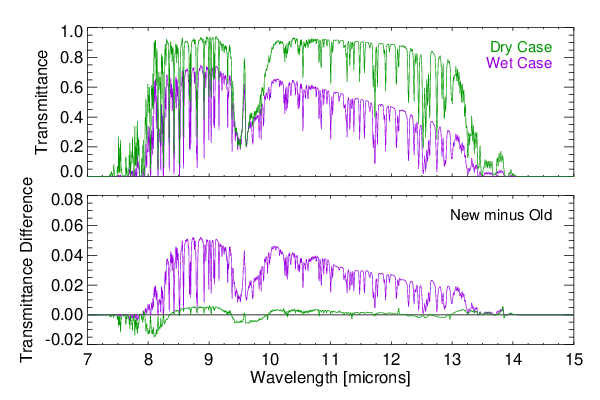A more transparent infrared window
Submitter:
Mlawer, Eli J. — Atmospheric and Environmental Research
Area of research:
Radiation Processes
Journal Reference:
Science
Thermal radiation emitted by the surface in the infrared spectral region from 8.0 to 12.8 µm passes relatively unimpeded through the atmosphere, allowing Earth to cool. Researchers analyzed several years of spectrally resolved radiance observations from a ground-based instrument to determine the strength of absorption in this spectral region. The results of this analysis showed that this absorption was overall significantly weaker than had been previously thought.
Impact
Researchers performed a radiative closure analysis that compared radiance observations by a ground-based interferometer and corresponding calculations by a radiative transfer model to analyze the strength of atmospheric absorption in a transparent region of the infrared termed the “infrared window.” The limited amount of atmospheric absorption that does occur in this region is primarily due to water vapor, and in particular due to an absorption mechanism termed the water vapor continuum. The results of this study indicate that the strength of water vapor continuum absorption is less than had been previously thought due to reduced absorption related to the interactions of water vapor molecules with other water vapor molecules -- that is, the water vapor self continuum. The derived water vapor continuum changes allow the Earth to cool approximately 5–10% better than had previously been thought, and climate simulations that use the revised infrared window continuum will show somewhat less warming than before. The change in the radiative cooling is largest for moist conditions, such as in the tropics, and relatively small for drier conditions (e.g., polar regions).
Summary
The infrared window region (8 to12.8 µm) is of great importance to Earth's climate due to its high transparency and thermal energy. Researchers performed a new investigation of the transparency of this spectral region based on observations by interferometers of downwelling surface radiance at two U.S. Department of Energy Atmospheric Radiation Measurement user facility sites. The focus of this study was the dominant source of absorption in this region, the water vapor continuum, and updated values of spectral absorption coefficients were derived for both the self and foreign components of this continuum. The results showed that the self continuum was too strong in the previous version of the commonly used MT_CKD water vapor continuum model, while the foreign continuum is too weak in MT_CKD. In general, the weaker self continuum derived in this study results in an overall increase in atmospheric transparency in the infrared window, although in atmospheres with low amounts of water vapor the transparency may slightly decrease.



